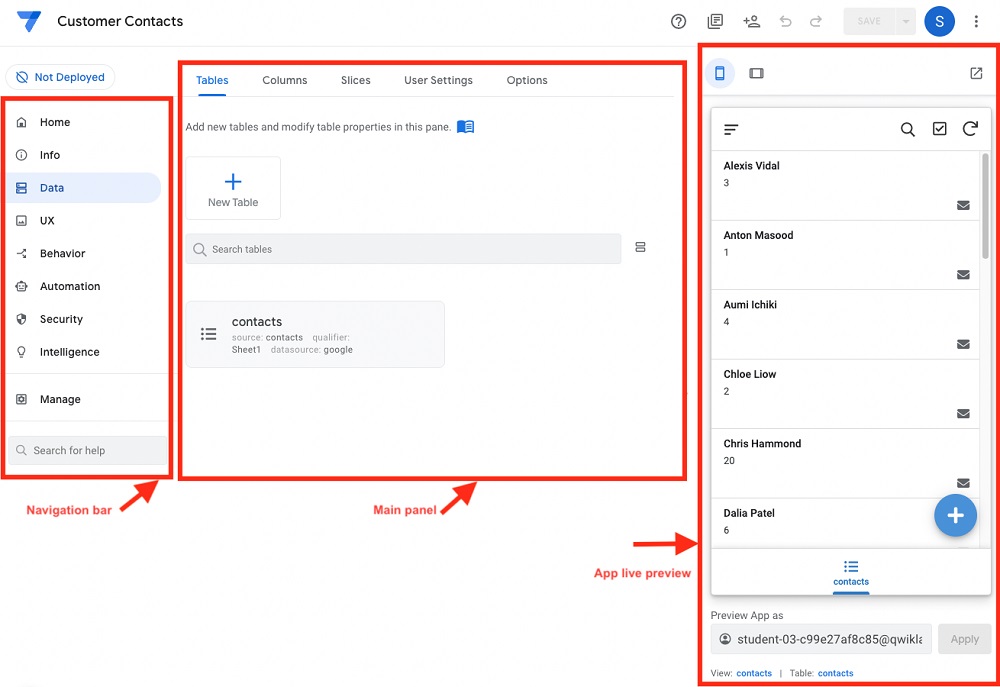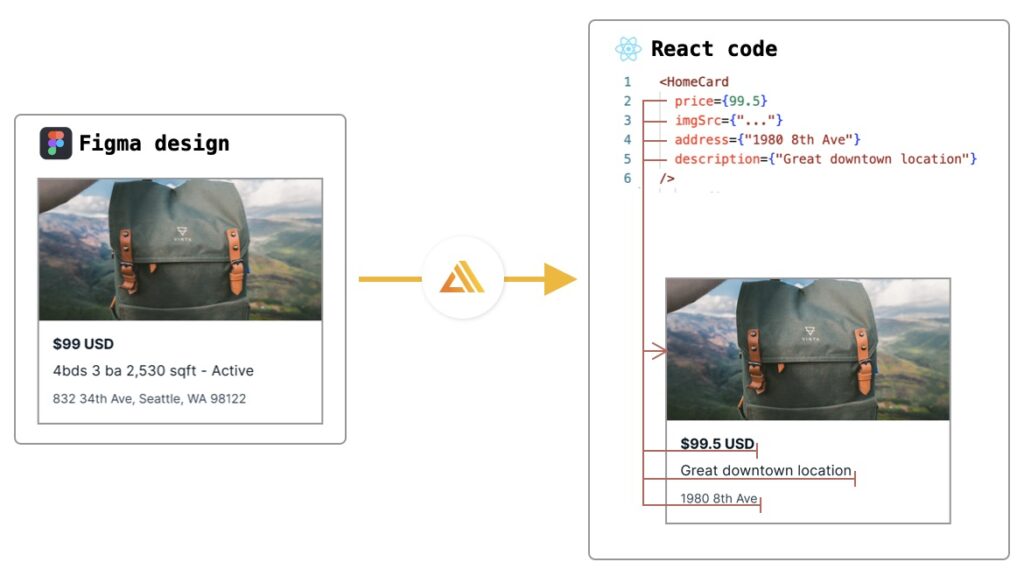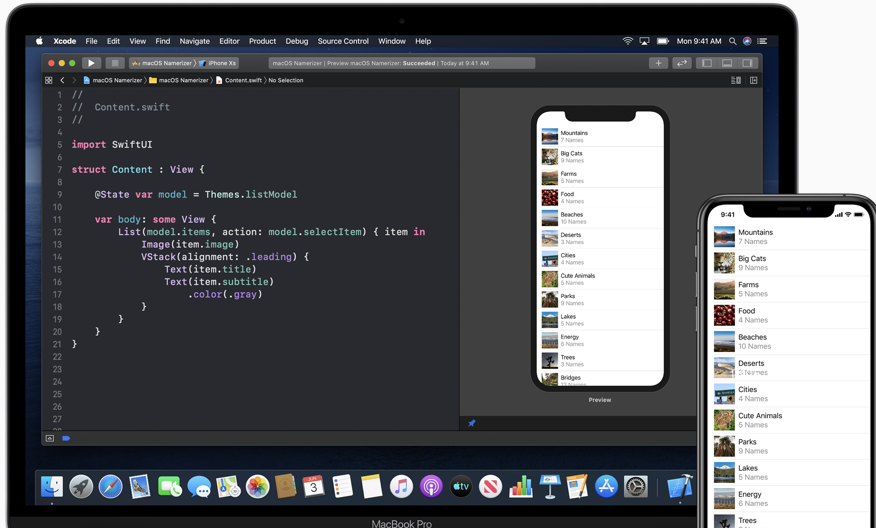You know when something is getting “hot” when all major tech companies (i.e. the Big Five: Facebook/Meta, Amazon, Apple, Microsoft, Google/Alphabet) invest and build solutions for it. And this is exactly what is happening right now with the software modeling and low-code market. Let’s see what are the solutions / initiatives each of these companies are proposing, each of them at a different level and targeting a different market but going the modeling route nonetheless!
No-code / low code by Microsoft
PowerApps is the no-code solution from Microsoft, targeting business users. As they put it, you can “begin with your data model and business processes to automatically generate immersive, responsive applications that can run on any device. Use a simple drag-and-drop designer to customize business entities and tailor the user experience to specific roles”.
IMHO, PowerApps is more of a way to connect and exchange data among different business tools from Microsoft itself so its strength is that it’s almost a no-learn tool that relies on the same user interfaces users are already used to. Still, this is more than enough for a large variety of scenarios and many users than just need some quick tailoring of existing solutions. In the end, we should not forget that Access and Excel are already used as “development” tools (even “modeling” ones) by many people.
But of course, you can always extend them with custom code by “extend app capabilities with Azure Functions and custom connectors to proprietary or on-premises systems”.
Google’s no-code solution
In short, App Sheet is the PowerApps version of Google. With App Sheet you can easily integrate a variety of Google tools and services (Gmail, Sheets, …) including data-driven apps on top of Google Cloud SQL. Templates, drag-and-drop UI design and declarative data modeling are available to designers to accelerate app development. It’s also easy to integrate your app with third-party services via integrations already part of Google Workspace.
App Sheet is Google’s primary product in this domain since Google announced that App Maker was going to be shut down on January 19, 2021. AppSheet was bought by Google a couple of years ago.
Amazon low-code revolution
Amazon was the strangest case. Given the plethora of services they offer and the need to combine and orchestrate them, one would expect company-wide support for modeling tools. And this wasn’t the case the first time we look (in 2019). Things have changed a lot since then! Now Amazon has not one but two offerings in this space.
First we have its no-code solution Honeycode. Similar to Microsoft and Google’s alternatives, it helps you to build custom (data-driven) apps without programming: “Honeycode apps are built in four steps: Organize your data in Tables. Build apps using the drag-and-drop App Builder. Use Automations to replace manual steps in your process. Share your apps with your team”. As always, there is also an API you can use to build your custom extensions and integrations.
Then, we have Amplify Studio, a visual interface that allows developers “to easily build and ship complete web and mobile apps in hours. With Amplify Studio, you can quickly build an app backend, create rich user interface (UI) React components, and connect a UI to the backend in clicks”. As a low-code approach, the result of this modeling and transformation is the set of coding artefacts that you can then manage at will. I found especially interesting that they are even able to connect to Figma to generate React interfaces from Figma designs.
And there is even a third product, this time specialized in Machine Learning applications: Amazon Sagemaker (see other tools in this category here). Sagemaker “offers low-code tools for each step of the ML lifecycle so you can prepare your data, and build, train, and deploy high-quality models faster”.
Apple – SwiftUI
Better Apps. Less code. This is how Apple defines SwiftUI, its bet to slowly enter the low-code world. With SwiftUI you can build user interfaces for any Apple device using a minimal declarative syntax, drag & drop support and real-time preview (WYSIWYG approach).
It’s a more modest low-code approach than some of the other companies in this post, but it shows that nobody can escape the democratization of software development movement.
Facebook is a single-product company so it doesn’t make sense for Facebook to invest in developing a modeling tool to build external applications. But Facebook has indeed created React Native a cross-platform solution for mobile apps. As Facebook itself had to provide “native”-like versions of its software it made sense to invest and release React Native to simplify this process.
And there is more!
And these are not the only big software companies releasing new low-code or no-code tools. For instance, Oracle has a long tradition of selling modeling and code-generation tools targeting the Oracle database and the surrounding ecosystem (Oracle Designer for Oracle Forms quickly comes to mind with Oracle Apex as their key low-code tool) and have now released a Visual Builder for mobile apps targeting less tech-savvy people. SAP has also recently announced a low-code workflow automation tool: SAP Ruum, a new departmental workflow tool and SAP Intelligent Robotic Process Automation, its entry into the RPA space.
If you think about it, it makes perfect sense that all these companies invest in low-code and no-code tools. For them, it’s mostly a way to reach a broader audience of people and help them to consume their own platform, services and infrastructure. Basically, their line of thought is: the more people I help to build the software the more people will pay me to run that software. This way of delegating the benefit to the deployment infrastructure helps them to offer a pricing model much more reasonable than that of other low-code solutions. Low-code tool vendors need to make money selling their core products and services, FAAMG are more interested in growing their overall user ecosystem.
FNR Pearl Chair. Head of the Software Engineering RDI Unit at LIST. Affiliate Professor at University of Luxembourg. More about me.









Buzzwords wear off, so these have to be updated frequently.
Wasn’t Low Code be called 4GL some time ago.
The name changes but the ideas remain 🙂
I’m watching this space with interest but I can’t help but feel that starting the designer’s journey by having them draw forms on a blank canvas is not the best path to a successful system.
I agree in the sense that I think designers should focus on defining the data model. Most of forms are trivial CRUDs so they could be automatically generated and ask them to only define the more specfic ones (this was the focus of my old and completely failed attempt to build a generator: https://modeling-languages.com/umltosql-umltosymfonyphp-and-umltodjangopython-are-now-open-source/ )
Yes I agree. If you define all the constraints you need for the data then the form is pretty much done. It probably would not be all that hard to then expose a form builder interface to the end user under the guise of “Customize” whereby they could arrange the form to their aesthetic preference.
You generator looks interesting. I like your lessons learned posts that follow.
Hi Greg, the real value of such tools is the capability of extend an existing system.
With the spread of basic tech knowledge and huge increase of SOA systems (APIs). Allowing local developers to leverage and customize system for the company can be a huge differential.
It is like a staff employee that domains excel and spreadsheet nowadays. Those professionals can automate customizations and increase department productivity, even though that doesn’t replace a system at a whole.
Low code tools are no meaning for huge reliable scalable systems, they are a means for small customizations that can leverage department, productivity, short innovations and allow the company to adapt faster while the “main” system (or ERP) doesn’t cover all requirements.
My experience with Oracle Apex has been that power users aren’t being reached but as a developer I greatly appreciate it.
I think Mendix and Unqork have a better chance at reaching these non-coders than Oracle.
For me Oracle Apex lacks a way to deal with workflow-ish and decision table/tree type problems. It forces these problems into PL/SQL which is great but these patterns aren’t easy to write or maintain in imperative code.
Cloudfier and TextUML seem likely the best I have seen…the fastest way to get to “is this what you meant?” with a runnable pseudo-app.